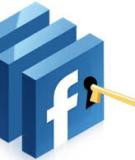
(MULTIMEDIA AND GAMES)
IT4440
Đa phương tiện
và các ứng dụng giải trí

Nội dung môn học
Tuần
Chủ đề Số tiết
1
Giới
thiệu về môn học
1
– 5
Phần
I. Tổng quan về thông tin đa phương tiện và các kỹ thuật xử lý 15
1
Chương
I: Nhập môn Multimedia 1
1
Chương
II: Một số kiến thức cơ bản 1
2
Chương
III: Ảnh 4
3
Chương
IV: Màu 3
4
Chương
V: Video 3
5
Chương
VI: Audio 3
6
–
Phần
II. Một số ứng dụng đa phương tiện
Chương
V: Multimedia- ứng dụng và giải trí
Chương
VI: Ứng dụng web
Chương
VII: Ứng dụng mobile
Chương
VIII: Ứng dụng 3D
Chương
IX: Ứng dụng Game
Bảo
vệ Bài tập lớn, Tổng kết ôn tập

Nội dung môn học
Tuần
Chủ đề Số tiết
1
Giới
thiệu về môn học
1
– 5
Phần
I. Tổng quan về thông tin đa phương tiện và các kỹ thuật xử lý 15
1
Chương
I: Nhập môn Multimedia 1
1
Chương
II: Một số kiến thức cơ bản 1
2
Chương
III: Ảnh 4
3
Chương
IV: Màu 3
4
Chương
V: Video 3
5
Chương
VI: Audio 3
6
–
Phần
II. Một số ứng dụng đa phương tiện
Chương
V: Multimedia- ứng dụng và giải trí
Chương
VI: Ứng dụng web
Chương
VII: Ứng dụng mobile
Chương
VIII: Ứng dụng 3D
Chương
IX: Ứng dụng Game
Bảo
vệ Bài tập lớn, Tổng kết ôn tập

Mục tiêu của chương
Một số khái niệm
Âm thanh số
Nén âm
MIDI vs. Audio
Tổng kết chương
Tài liệu tham khảo
Chương VI: Audio

Người học sẽ:
Được trang bị kiến thức âm thanh, biểu diễn,
lưu trữ và tạo âm thanh
Được giới thiệu nguyên lý và phương pháp
nén, xử lý và truyền âm thanh
Sau khi kết thúc chương, người học :
Nắm được kiến thức cơ bản về âm thanh
Biết vận dụng một số kỹ thuật, công cụ xử lý
âm thanh để tạo và lưu trữ âm thanh trong
ứng dụng cụ thể
V.1 Mục tiêu của chương






![Ứng dụng tồi tệ nhất trên iPhone: [Đánh giá/ Tổng hợp/ Danh sách]](https://cdn.tailieu.vn/images/document/thumbnail/2013/20130729/sunshine_10/135x160/8741375043205.jpg)
![10 ứng dụng nên tải ngay cho iPhone 5 [Mới nhất]](https://cdn.tailieu.vn/images/document/thumbnail/2013/20130727/sunshine_10/135x160/1527632_149.jpg)
![Top 5 ứng dụng miễn phí hấp dẫn nhất cho thiết bị iOS [năm hiện tại]](https://cdn.tailieu.vn/images/document/thumbnail/2013/20130727/sunshine_10/135x160/9331374900320.jpg)
![Cây Chương 3 Phần 2: [Thông tin chi tiết về nội dung chương]](https://cdn.tailieu.vn/images/document/thumbnail/2013/20130704/longbaoit_bkdn/135x160/1191372932395.jpg)
![KMPlayer: Những tính năng bí ẩn ít người khám phá [Mới Nhất]](https://cdn.tailieu.vn/images/document/thumbnail/2013/20130322/bibocumi35/135x160/1390519_266.jpg)















